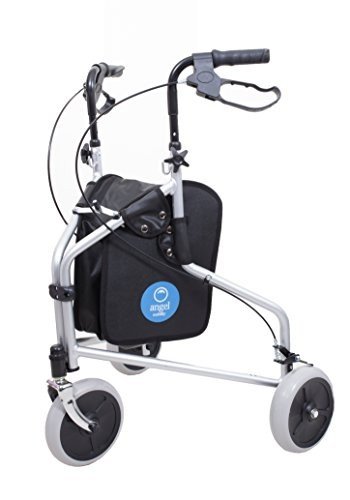A Comprehensive Guide to Buying a Mobility Scooter
Mobility scooters have become an important tool for many people aiming to enhance their self-reliance and mobility. With a vast selection of designs and features offered, choosing the right mobility scooter can be daunting. This article supplies a useful guide to assist consumers browse their alternatives, examine their requirements, and make an informed purchase.
Comprehending Mobility Scooters
Mobility scooters are electric lorries developed for people who experience mobility obstacles. buy mobility scooters online are especially useful for senior citizens, those with specials needs, or people recuperating from injuries. Mobility scooters can differ commonly in regards to design, features, and rates.
Types of Mobility Scooters
Before starting a purchase, it's important to comprehend the various kinds of mobility scooters readily available:
Three-Wheel Scooters:
- Generally more maneuverable in tight spaces
- Lightweight and portable
- Perfect for indoor use
Four-Wheel Scooters:
- Offer greater stability and balance
- Ideal for outside usage over different terrains
- Normally have a longer battery life
Foldable/Portable Scooters:
- Designed to be easily transferred and kept
- Can typically fit in the trunk of a cars and truck
- Ideal for those who take a trip often
Durable Scooters:
- Built to accommodate larger individuals
- Often included more robust features for outdoor usage
- Usually geared up with bigger batteries for extended variety
Factors to Consider When Buying a Mobility Scooter
1. Weight Capacity
Select a mobility scooter that can support the user's weight. The majority of scooters have a weight limitation ranging from 250 to 500 pounds. It is essential to ensure that the scooter can accommodate the user conveniently.
2. Range and Battery Life
The range is how far the mobility scooter can travel on a single charge. Typical ranges differ between 10 to 30 miles. Think about the user's day-to-day activities and choose a scooter with an ideal variety.
3. Scooter Dimensions
Consider the size of the scooter, including its weight and dimensions. A more compact scooter might be ideal for narrow corridors and tight spaces, while bigger models use extra stability and comfort.
4. Terrain Capability
Examine where the scooter will mostly be utilized. If the user prepares to take a trip mostly on pavement, a lightweight design might be sufficient. However, if the user needs to traverse gravel or irregular surface areas, consider a four-wheel scooter built for off-road use.
Leading Features to Look For
Convenience
- Adjustable Seats: Look for scooters with cushioned and height-adjustable seats to ensure comfort during travel.
- Armrests: These boost security and assistance while navigating.
Security and Visibility
- Headlights and Taillights: Essential for nighttime use.
- Turn Signals and Reflectors: Improve presence and security while on the road.
User-Friendly Controls
- Joystick or Drive Controls: These need to be user-friendly and simple to manipulate.
- Easy-to-Read Displays: A control board that shows battery life, speed, and distance can boost the user experience.
Additional Features
- Storage Compartments: These offer included convenience for carrying individual items while on the go.
- Weather Protection: Consider designs with rain covers or windshields if utilized in variable climate condition.
Cost Considerations
When budgeting for a mobility scooter, rates can vary anywhere from ₤ 500 to over ₤ 5,000 depending upon the model, functions, and brand. Additional costs might consist of:
- Extended Warranty: Protects against problems and can conserve money in the long run.
- Accessories: Optional features, such as updated seats, lights, or storage services.
| Function | Expense Range |
|---|---|
| Basic Models | ₤ 500 - ₤ 1,500 |
| Mid-Range Models | ₤ 1,500 - ₤ 3,000 |
| High-End Models | ₤ 3,000 - ₤ 5,000 |
Funding Options
Many merchants use financing strategies, and some city government efforts may supply grants or support for those in need. Examine prospective monetary help with neighborhood resources or mobility service organizations.
FAQs about Buying a Mobility Scooter
What is the difference between a mobility scooter and a wheelchair?
Mobility scooters are motorized and enable users to browse individually, while wheelchairs may require physical support or manual operation.
How do I preserve a mobility scooter?
Routine maintenance includes examining battery life, cleaning the scooter, and checking tires and brakes. Constantly describe the user manual for specific guidelines.
Can mobility scooters be used indoors?
Yes, numerous models are created for both indoor and outdoor usage. Nevertheless, three-wheel scooters tend to be better matched for indoor navigation due to their tighter turning radius.
Are mobility scooters covered by insurance coverage?
Some insurance coverage plans cover a portion of the costs for mobility scooters if they are deemed medically needed. Contact your company for specific details.
How quick can a mobility scooter go?
The majority of mobility scooters have an optimal speed ranging from 4 to 8 miles per hour. However, the suitable speed may vary depending on regional regulations.
Purchasing a mobility scooter can significantly enhance one's self-reliance and lifestyle. By understanding the types, features, and expenses associated with mobility scooters, potential purchasers can make well-informed decisions that match their needs and preferences. Personalization and thorough research study are crucial to making sure satisfaction with this essential investment.

